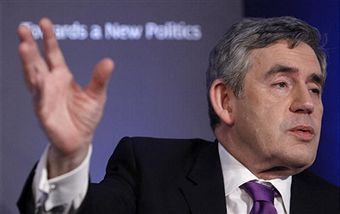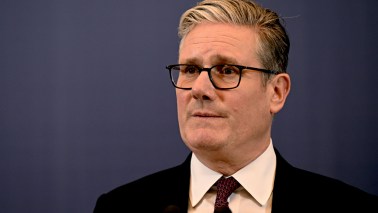 It’s back to the British Museum for public finances anoraks. After George Osborne’s speech here yesterday, the IFS are this morning presenting their Green Budget (that’s green in colour, rather than green in outlook). It’s the mid-session coffee break, so I thought I’d fill CoffeeHousers in on what’s been said so far.
It’s back to the British Museum for public finances anoraks. After George Osborne’s speech here yesterday, the IFS are this morning presenting their Green Budget (that’s green in colour, rather than green in outlook). It’s the mid-session coffee break, so I thought I’d fill CoffeeHousers in on what’s been said so far.
The bottom line came more or less immediately, with the IFS director Robert Chote’s introduction. His point was that the next government will have to introduce “more ambitious” fiscal tigthening, going forward to 2015, than that set out in Darling’s PBR. But he added that there shouldn’t really be more spending cuts and tax rises this year. The way things have gone this week, that message may well suit both main parties – although I imagine that Labour, in particular, will make great play with it.
Elsewhere, Michael Dicks from Barclays Wealth suggested that GDP will be much slower to recover than the Treasury thinks – with potential GDP growth at 1.75 percent, perhaps even lower, until 2015. That’s opposed to Darling’s 2.75 percent forecast.
The IFS’s Carl Emmerson had these points to add, among others:
– The Treasury’s current plan is to get the deficit down with 1/3rd tax rises and 2/3rds spending cuts.
-Going off the government’s plans, the period of greatest fiscal tightening is between 2010-11 and 2012-12.
– Extrapolating government plans forward, we wouldn’t get debt down to under 40 percent of GDP until the early 2030s.
– The IFS are working on the assumption that when the Tories say they would get borrowing down “quicker,” that means £15 billion less borrowing by 2015-16. Extrapolating forward, debt would still remain over 40 percent until the early 2030s.
And then Gemma Tetlow – that IFS researcher who has a knack for hunting down Brown’s hidden spending cuts – set out why they think borrowing will come in £10.4 billion lower this year than the goverment expects. ‘Tis all to do with higher-than-expected tax receipts and lower-than-expected public spending. Things took a gloomier turn, though, when she incorporated Barclay’s more pessimistic forecasts for the economy. Under their “central” forecast, national debt would be pushing 90 percent of GDP in 2015, rather than the 77 percent the government foresees. Not good.
Anyway, it’s time to find some caffeine and get back into the conference hall. I’ll report any developments later.






Comments